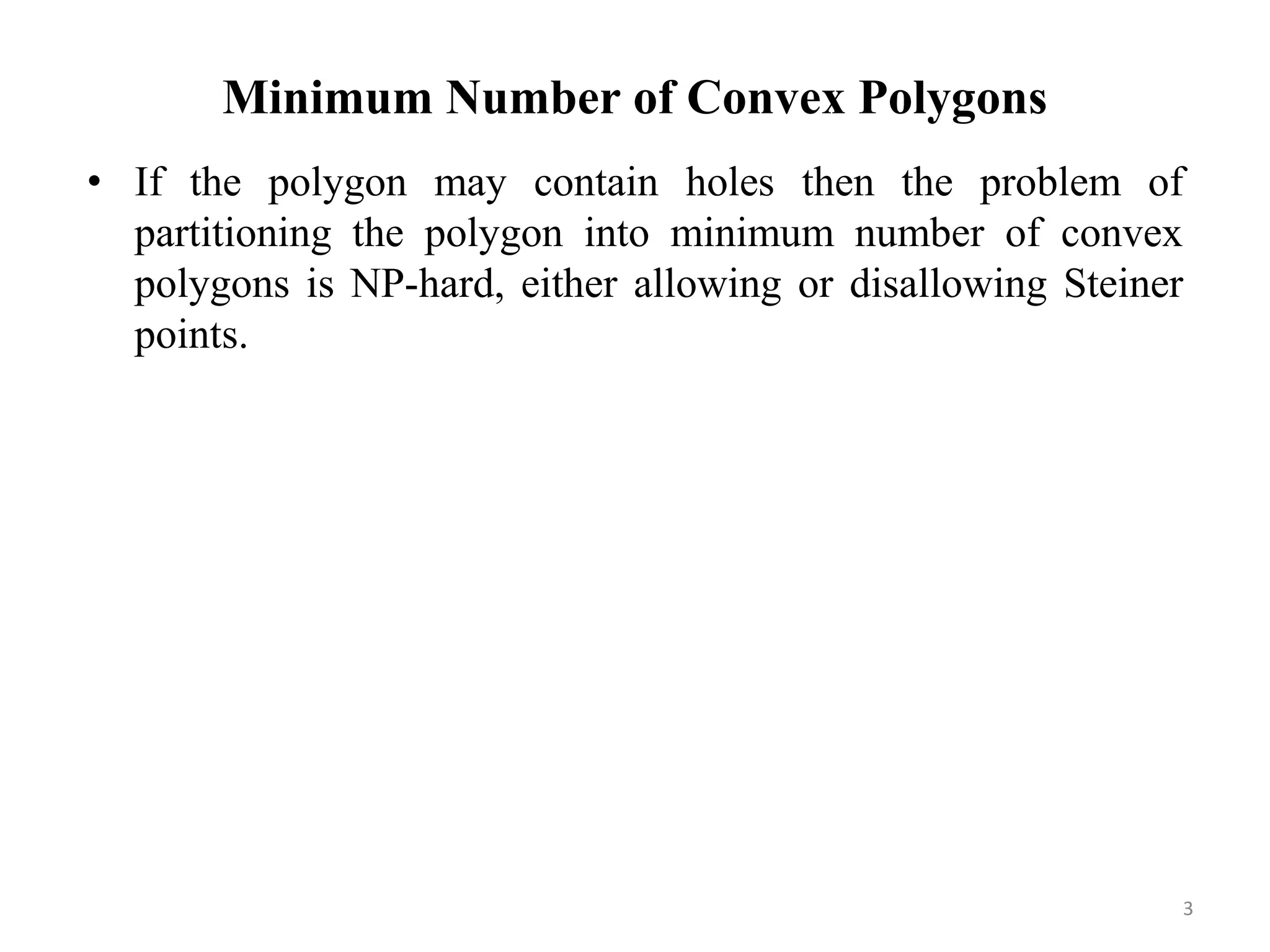This document discusses algorithms for partitioning a polygon into the minimum number of convex polygons. It describes that if the polygon contains holes, finding the minimum convex partition is NP-hard. For polygons without holes and disallowing additional points, algorithms by Feng and Pavlidis (1975), Schachter (1978), Chazelle (1982), and Greene (1983) run in O(n log n) time but do not always produce the minimum partition. Algorithms by Greene (1983) and Keil (1985) run in O(N^2n^2) and O(N^2n log n) time respectively and are guaranteed to find the minimum partition without adding points. The algorithm by Chazelle



![Algorithms that Fails to Produce the Minimum
• Let’s consider the polygons without holes disallowing Steiner
points.
• Algorithm by Feng and Pavlidis [1975] runs in O (N3n) time.
• Algorithm by Schachter [1978] runs in O (nN) time.
• Algorithm by Chazelle [1982] runs in O (n log n) time and
produces a partition in which the number of convex polygons
is fewer than 13/3 times the minimum.
• Algorithm by Greene [1983] runs in O (n log n) time and
produces a partition in which the number of convex polygons
is less than or equal to 4 times the minimum.
• Algorithm by Hertel & Mehlhorn [1985] runs in O (n log n)
time and produces a partition in which the number of convex
polygons is less than or equal to 4 times the minimum.
4](https://image.slidesharecdn.com/polygonconvexpartitioning-201016101028/75/Algorithms-for-Convex-Partitioning-of-a-Polygon-4-2048.jpg)
![Algorithms that Succeeds Produce the Minimum
• Algorithm by Greene [1983] runs in O (N2n2) time
disallowing Steiner points.
• Algorithm by Keil [1985] runs in O (N2 n log n) time
disallowing Steiner points.
• Algorithm by Chazelle & Dobkin [1985] runs in O (n + N3)
time allowing Steiner points.
5](https://image.slidesharecdn.com/polygonconvexpartitioning-201016101028/75/Algorithms-for-Convex-Partitioning-of-a-Polygon-5-2048.jpg)
